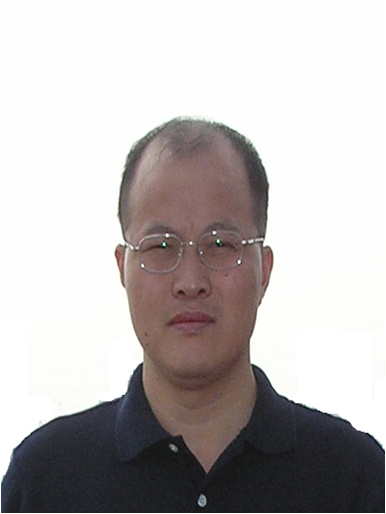
Chunyang Cao, Prof. in Chemical Biology
Shanghai Institute of Organic Chemistry
Chinese Academy of Sciences
Email: ccao@mail.sioc.ac.cn
Tel: 021-54925491
Address: 345 Lingling Road, Xuhui District
Shanghai, 200032 , China
Research Areas
1) NMR studies on G4-DNA structures found in transcription factor in cancer cell and selectively drug screening
2) Mechanism studies on DNA modification (i.e. methylation and deamination) related to cancer and virus infection
Education
1998.9-2001.7 Ph.D in organic chemistry. Shanghai Institute of Organic Chemistry, Chinese Academy of Sciences
1993.9-1998.7 Master Degree in organic chemistry, State Key Laboratory of Elemento Organic Chemistry, Nankai Univversity;
1989.9-1993.7 Bachelor Degree in chemical eduation, Jiangsu Normal university
Experience
1996.8-1998.8 China Pharmaceutical University, Assistant Professor
2001.8-2005.10 Postdoc fellowship, Johns Hopkins University School of Medicine,Baltimore, MD, USA
2005.11-2006.8 Research Associate, Salk Institute for Biological Studies, La Jolla, CA,USA
Work Experience
1996.8-1998.8 China Pharmaceutical University, Assistant Professor
2001.8-2005.10 Postdoc fellowship, Johns Hopkins University School of Medicine,Baltimore, MD, USA
2005.11-2006.8 Research Associate, Salk Institute for Biological Studies, La Jolla, CA,USA
Teaching Experience
2006.9-present Lecturer professor Prof in " Structural illustration of organic compounds by MS, NMR and IR spectroscopies"
Honors & Distinctions
2008.8 Hudred talent Program of Chinese Academy of Sciences
2008.8 Shangai Pujiang Excent Scholarship
2012.10 Wangtianjuan Funding Spectroscopy Scholarship
Publications
1. Lan W, Hu Z, Shen J, Wang C, Jiang F, Liu H, Long D, Liu M, Cao C*, Structural investigation into physiological DNA phosphorothioate modification.Sci Rep. 2016;6:2573
2. Fang J, Cheng J, Wang J, Zhang Q, Liu M, Gong R, Wang P, Zhang X, Feng Y, Lan W, Gong Z, Tang C, Wong J, Yang H, Cao C*, Xu Y*, Hemi-methylated DNA opens a closed conformation of UHRF1 to facilitate its histone recognition., Nat Commun. 2016;7:11197.
3. Liu S, Guo H, Zhang T, Han L, Yao P, Zhang Y, Rong N, Yu Y, Lan W, Wang C, Ding J, Wang R, Liu W, Cao C*. Structure-based Mechanistic Insights into Terminal Amide Synthase in Nosiheptide-Represented Thiopeptides Biosynthesis. Sci Rep. 2015 Aug 5;5:12744.
4. Lu X, Zhang T, Xu Z, Liu S, Zhao B, Lan W, Wang C, Ding J, Cao C*. Crystal structure of DNA cytidine deaminase ABOBEC3G catalytic deamination domain suggests a binding mode of full-length enzyme to single-stranded DNA. J Biol Chem. 2015, ;290(7):4010-21.
5. Lan W, Wang Z, Yang Z, Ying T, Zhang X, Tan X, Liu M, Cao C*, Huang ZX*. Structural basis for cytochrome c Y67H mutant to function as a peroxidase.PLoS One. 2014;9(9):e107305.
6. Zhang Y, Yang H, Guo X, Rong N, Song Y, Xu Y, Lan W, Zhang X, Liu M, Xu Y, Cao C*. The PHD1 finger of KDM5B recognizes unmodified H3K4 during the demethylation of histone H3K4me2/3 by KDM5B.Protein Cell. 2014;5(11):837-50.
7. Liu S, Zhang W, Gao Z, Ming Q, Hou H, Lan W, Wu H, Cao C*, Dong Y*. NMR structure of the N-terminal-most HRDC1 domain of RecQ helicase from Deinococcus radiodurans.FEBS Lett. 2013;587(16):2635-42.
8. Yang Z, Vild C, Ju J, Zhang X, Liu J, Shen J, Zhao B, Lan W, Gong F, Liu M, Cao C*, Xu Z*.Structural basis of molecular recognition between ESCRT-III-like protein Vps60 and AAA-ATPase regulator Vta1 in the multivesicular body pathway.J Biol Chem. 2012;287(52):43899-908.
9. Hu W, Wang C, Liang J, Zhang T, Hu Z, Wang Z, Lan W, Li F, Wu H, Ding J, Wu G, Deng Z, Cao C*. Structural insights into DndE from Escherichia coli B7A involved in DNA phosphorothioation modification.Cell Res. 2012, 22(7):1203-6.
10. Lan WX, Wang ZH, Yang ZZ, Cao C*. Huang ZZ, et al Conformational toggling of Yeast Iso-1-cytochrome c in the oxidized and reduced states, PLoS One, 2011, 6(11):e27219
11. Zhu S, Peigneur S, Gao B, Lu X, Cao C*, Tytgat J. Evolutionary diversification of Mesobuthus {alpha}-scorpion toxins affecting sodium channels, Mol Cell Proteomics, 2012, M111.012054
12. Zhang Y., Hu W., Shen J., Tong XT, Lan WX, Cao C*. Cys397 plays important roles in the global folding of the neuron-restricted silencer factor/RE1-silencing transcription factor, BBRC, 2011, 414(2):309-14
13. Zhang LL, Yang Z., Zhang Y., Cao C*., et al., Highly efficient production of soluble proteins from insoluble inclusion bodies by a two-step-denaturing and refolding method PloS One 2011, 2011;6(7):e22981.
14. Wang CK, Shen J., Yang ZZ, Cao C*. et al Structural basis of readout of unmodified H3R2 by UHRF1 PHD, Cell Res, 2011, 2011, 21(9):1379-82
15. Tong XT, Lan WX, Zhang X., Liu ML, Cao C*., Solution structure of all parallel G-quadruplex formed by the oncogene RET promoter sequence Nucleic Acid Res. 2011, 2011 39(15):6753-63
Students
1) Wei Hu, Ph.D. 2010, Senior Engineer in GE Company
2) Zhongzheng Yang, Ph.D. 2010, Facility manager in Wuhan Biological Instudies
3) Jie Shen, Ph.D. 2011, Facility manager in Tianjin Institute of Industrial Biotechnology
4) Yan Zhang, Ph.D., 2013, Postdoc fellow in Michigan University Ann Arbor
5) Shanshan Liu, Ph.D., 2013, Postdoc fellow in Harvard University Medical School
6) ChengKun Wang, Ph.D. 2013, Postdoc felllow in Case Western Research University, Research fellow in Beijing University
7) Naiyan Rong, Ph.D. 2015, Senior Scientist in Shanghai APP Tec
8) Bin Zhao, Ph.D., 2015, Senior Scientist in Shanghai APP Tec
9) Jiaolong Wang, Master Degree, 2014, Research assistant, Shanghai Technoogy Univversity
10) Pengfei Yao, Master Degree, 2014, Engineer in APP Tech, Shanghai
11) Qianqian Ming, Master Degree, 2013, Ph.D. student in Max Delbruck for Molecular Medicine. Helmholtz Associatiom, German
12) Xiuxiu Lu, Ph.D. , 2014, National Cancer Institute, National Institute of Health, MD, USA
